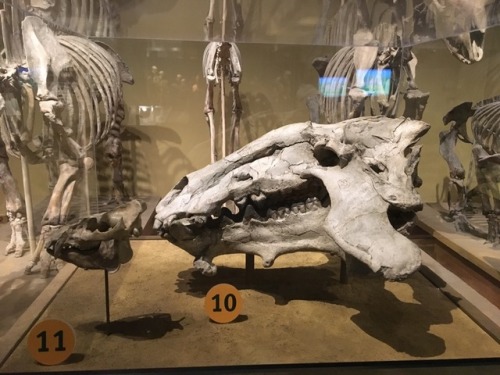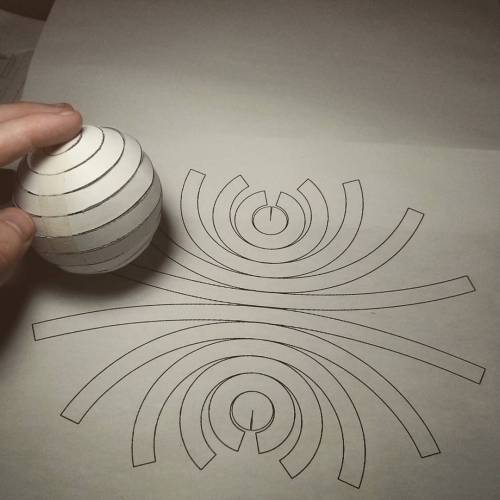Ticks In Amber That Fed On Dino Blood



Ticks in amber that fed on dino blood
The 99 million year old fossilised tree sap from Burma has brought us several significant finds of late including a baby bird (see http://bit.ly/2C8DsW1) and some early avian wings (see http://bit.ly/2hpvCQK). Now some preserved remnants from a feathered dinosaur nest has revealed several parasitic ticks (a type of arachnid, related so spiders and scorpions) alongside a dinosaur feather (one clinging to it for dear life) and nest dwelling beetles, and several other fossilised ticks have appeared in material from the same location. The feather clinger was seemingly filled with dinosaur blood and swollen to 8 times its normal size after its final and fatal feast (named by the team Deinocroton draculi aka Dracula’s terrible tick). For those fans of Jurassic Park amongst our readers, I’ll just remind you of the unfortunate scientific fact that DNA simply does not survive that long except in the tiniest and hard to read dribs and drabs (at the very best, and even these prove highly contentious).
Continuar lendo
More Posts from Iphleandro-blog and Others






hannah__dawn 🐉


Entelodonts: terrifying.
Shown here compared to a modern pig skull on the left. (Entelodonts were actually more closely related to whales and hippos than pigs.)

Cute animals ♥




These are just amazing!
Moth is not a four-letter word for this UK knitter! | KnitHacker
Max Alexander‘s knitted moths are incredible – I am simply blown away. LOVE! I also like the irony of using wool to knit moths – normally that combination strikes fear into the heart of every knitter/crocheter I know!
African Cherry Spot Moth
Knitted Merveille du Jour Moth
Tatargina Picta Moth
Peach Blossom Moth

Can you flatten a sphere?
The answer is NO, you can not. This is why all map projections are innacurate and distorted, requiring some form of compromise between how accurate the angles, distances and areas in a globe are represented.
This is all due to Gauss’s Theorema Egregium, which dictates that you can only bend surfaces without distortion/stretching if you don’t change their Gaussian curvature.
The Gaussian curvature is an intrinsic and important property of a surface. Planes, cylinders and cones all have zero Gaussian curvature, and this is why you can make a tube or a party hat out of a flat piece of paper. A sphere has a positive Gaussian curvature, and a saddle shape has a negative one, so you cannot make those starting out with something flat.
If you like pizza then you are probably intimately familiar with this theorem. That universal trick of bending a pizza slice so it stiffens up is a direct result of the theorem, as the bend forces the other direction to stay flat as to maintain zero Gaussian curvature on the slice. Here’s a Numberphile video explaining it in more detail.
However, there are several ways to approximate a sphere as a collection of shapes you can flatten. For instance, you can project the surface of the sphere onto an icosahedron, a solid with 20 equal triangular faces, giving you what it is called the Dymaxion projection.

The Dymaxion map projection.
The problem with this technique is that you still have a sphere approximated by flat shapes, and not curved ones.
One of the earliest proofs of the surface area of the sphere (4πr2) came from the great Greek mathematician Archimedes. He realized that he could approximate the surface of the sphere arbitrarily close by stacks of truncated cones. The animation below shows this construction.
The great thing about cones is that not only they are curved surfaces, they also have zero curvature! This means we can flatten each of those conical strips onto a flat sheet of paper, which will then be a good approximation of a sphere.
So what does this flattened sphere approximated by conical strips look like? Check the image below.
But this is not the only way to distribute the strips. We could also align them by a corner, like this:
All of this is not exactly new, of course, but I never saw anyone assembling one of these. I wanted to try it out with paper, and that photo above is the result.
It’s really hard to put together and it doesn’t hold itself up too well, but it’s a nice little reminder that math works after all!
Here’s the PDF to print it out, if you want to try it yourself. Send me a picture if you do!
that is so sad alexa play ozar midrashim

Like milk, coffee is a nutritional output. It comes from the rare FistPumpius Caffeinius.
-
 killerk47 liked this · 4 years ago
killerk47 liked this · 4 years ago -
 dubiousspectrum reblogged this · 6 years ago
dubiousspectrum reblogged this · 6 years ago -
 mykcfu liked this · 7 years ago
mykcfu liked this · 7 years ago -
 medusas-grave reblogged this · 7 years ago
medusas-grave reblogged this · 7 years ago -
 lotusgurl reblogged this · 7 years ago
lotusgurl reblogged this · 7 years ago -
 etysky reblogged this · 7 years ago
etysky reblogged this · 7 years ago -
 scolek liked this · 7 years ago
scolek liked this · 7 years ago -
 pixie-shmixie reblogged this · 7 years ago
pixie-shmixie reblogged this · 7 years ago -
 theanalyzersfanfics reblogged this · 7 years ago
theanalyzersfanfics reblogged this · 7 years ago -
 sulkyslakoth liked this · 7 years ago
sulkyslakoth liked this · 7 years ago -
 devkyu reblogged this · 7 years ago
devkyu reblogged this · 7 years ago -
 elopium reblogged this · 7 years ago
elopium reblogged this · 7 years ago -
 specspectacle reblogged this · 7 years ago
specspectacle reblogged this · 7 years ago -
 aantre reblogged this · 7 years ago
aantre reblogged this · 7 years ago -
 egoofthedead reblogged this · 7 years ago
egoofthedead reblogged this · 7 years ago -
 grillwave liked this · 7 years ago
grillwave liked this · 7 years ago -
 ilovecats4ever reblogged this · 7 years ago
ilovecats4ever reblogged this · 7 years ago -
 prizere liked this · 7 years ago
prizere liked this · 7 years ago -
 cloudair liked this · 7 years ago
cloudair liked this · 7 years ago -
 a-green-misstep liked this · 7 years ago
a-green-misstep liked this · 7 years ago -
 a13802463b liked this · 7 years ago
a13802463b liked this · 7 years ago -
 cybillsheridan-digital-phobic liked this · 7 years ago
cybillsheridan-digital-phobic liked this · 7 years ago -
 ursic777 liked this · 7 years ago
ursic777 liked this · 7 years ago -
 kazaore liked this · 7 years ago
kazaore liked this · 7 years ago -
 anoddgeography reblogged this · 7 years ago
anoddgeography reblogged this · 7 years ago -
 autmnwolf-blog liked this · 7 years ago
autmnwolf-blog liked this · 7 years ago -
 mariakerlegan liked this · 7 years ago
mariakerlegan liked this · 7 years ago -
 clearbrite reblogged this · 7 years ago
clearbrite reblogged this · 7 years ago -
 clearbrite liked this · 7 years ago
clearbrite liked this · 7 years ago -
 chromalogue liked this · 7 years ago
chromalogue liked this · 7 years ago -
 wafflewarriors liked this · 7 years ago
wafflewarriors liked this · 7 years ago -
 serpent-moon reblogged this · 7 years ago
serpent-moon reblogged this · 7 years ago -
 serpent-moon liked this · 7 years ago
serpent-moon liked this · 7 years ago -
 daggerousedges liked this · 7 years ago
daggerousedges liked this · 7 years ago -
 dreamyangtianqi liked this · 7 years ago
dreamyangtianqi liked this · 7 years ago -
 lukadian liked this · 7 years ago
lukadian liked this · 7 years ago -
 jasjabberwocky liked this · 7 years ago
jasjabberwocky liked this · 7 years ago -
 dyk3onysus liked this · 7 years ago
dyk3onysus liked this · 7 years ago -
 wojojojo liked this · 7 years ago
wojojojo liked this · 7 years ago -
 iphleandro-blog reblogged this · 7 years ago
iphleandro-blog reblogged this · 7 years ago -
 ambiguoustraveler liked this · 7 years ago
ambiguoustraveler liked this · 7 years ago -
 terezi liked this · 7 years ago
terezi liked this · 7 years ago